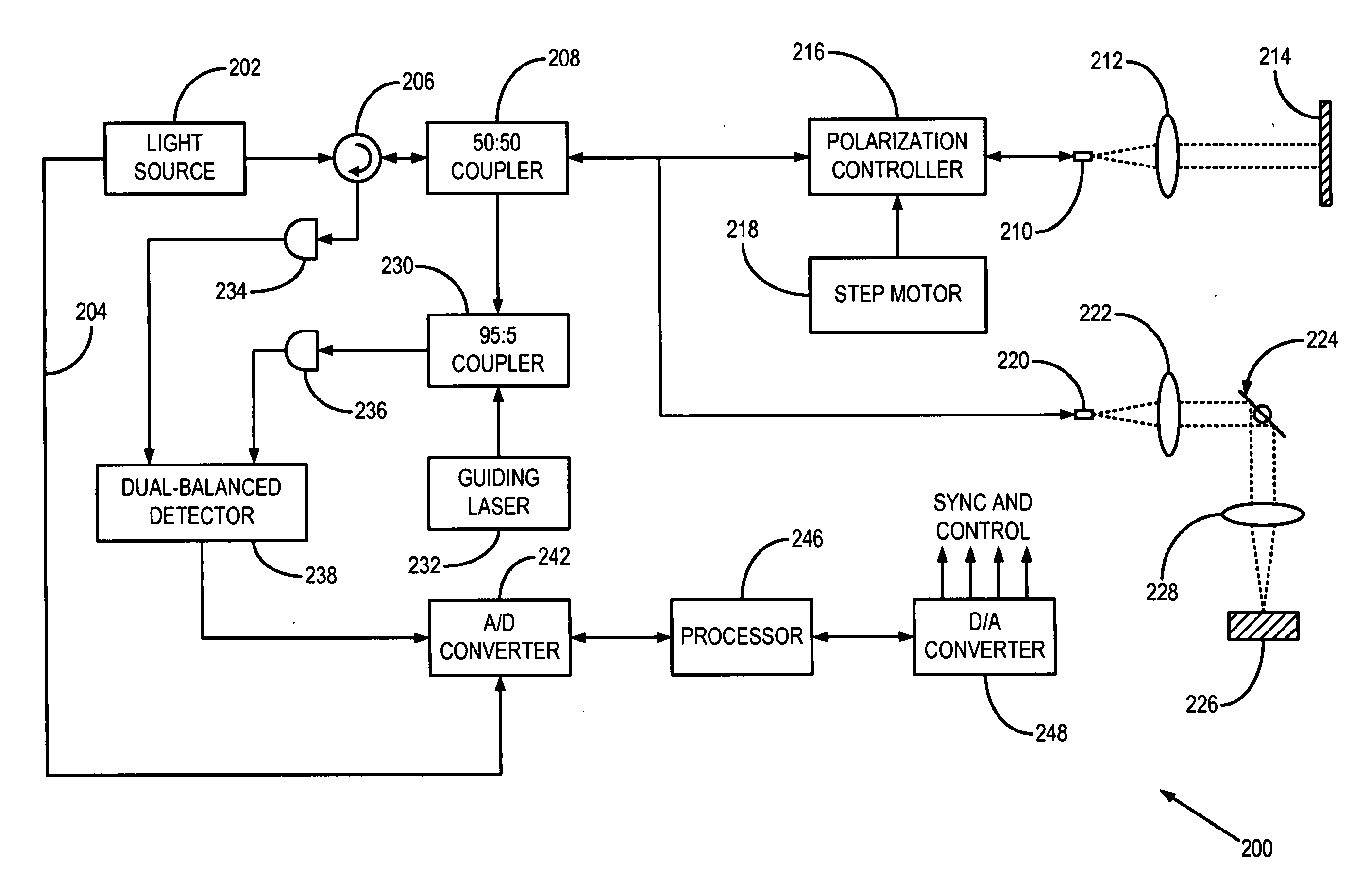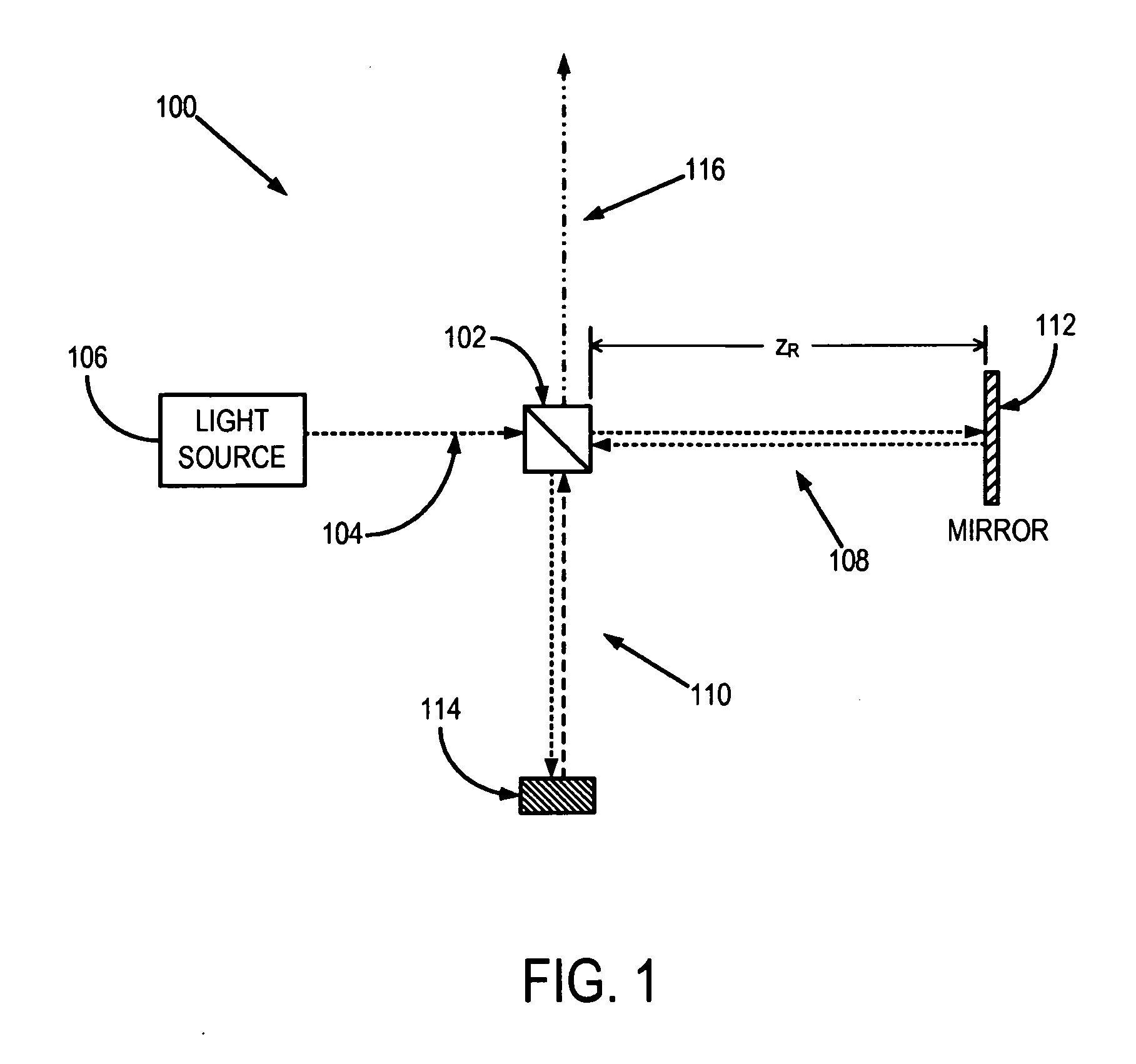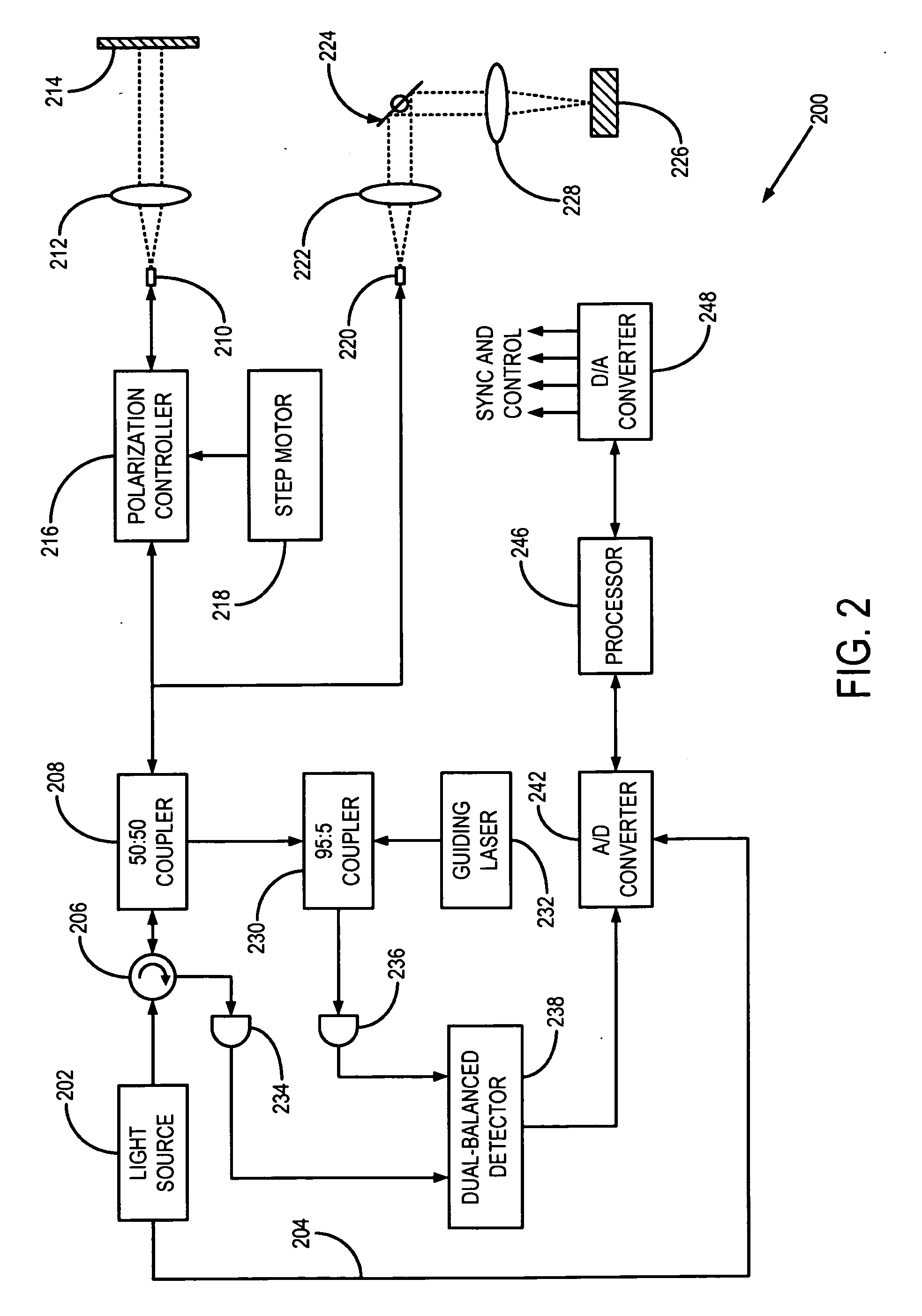System and method for calibrated spectral domain optical coherence tomography and low coherence interferometry
- Summary
- Abstract
- Description
- Claims
- Application Information
AI Technical Summary
Benefits of technology
Problems solved by technology
Method used
Image
Examples
Embodiment Construction
[0027]The theoretical analysis of a spectral-domain (“SD”) optical coherence tomography (“OCT”) system, such as a swept-source OCT (“SS-OCT”) or Fourier domain OCT (“FD-OCT”) system, is based, for example, on a free-space Michelson interferometer. This simplification generally holds regardless of the differences in interferogram measurement or whether the system is configured in free space or fiber-optically, and whether a different interferometer is employed. While reference is made herein to OCT systems and methods, it will be appreciated by those skilled in the art that the systems and methods are also applicable for low coherence interferometry.
[0028]An exemplary configuration of a free-space Michelson interferometer 100 is depicted in FIG. 1, to which reference is now made. A coupler 102 that also acts as a beam splitter, such as a 50:50 beam splitter, divides a light beam 104 from a light source 106 into a reference arm 108 and a sample arm 110 of the interferometer 100. In th...
PUM
 Login to View More
Login to View More Abstract
Description
Claims
Application Information
 Login to View More
Login to View More - R&D
- Intellectual Property
- Life Sciences
- Materials
- Tech Scout
- Unparalleled Data Quality
- Higher Quality Content
- 60% Fewer Hallucinations
Browse by: Latest US Patents, China's latest patents, Technical Efficacy Thesaurus, Application Domain, Technology Topic, Popular Technical Reports.
© 2025 PatSnap. All rights reserved.Legal|Privacy policy|Modern Slavery Act Transparency Statement|Sitemap|About US| Contact US: help@patsnap.com



